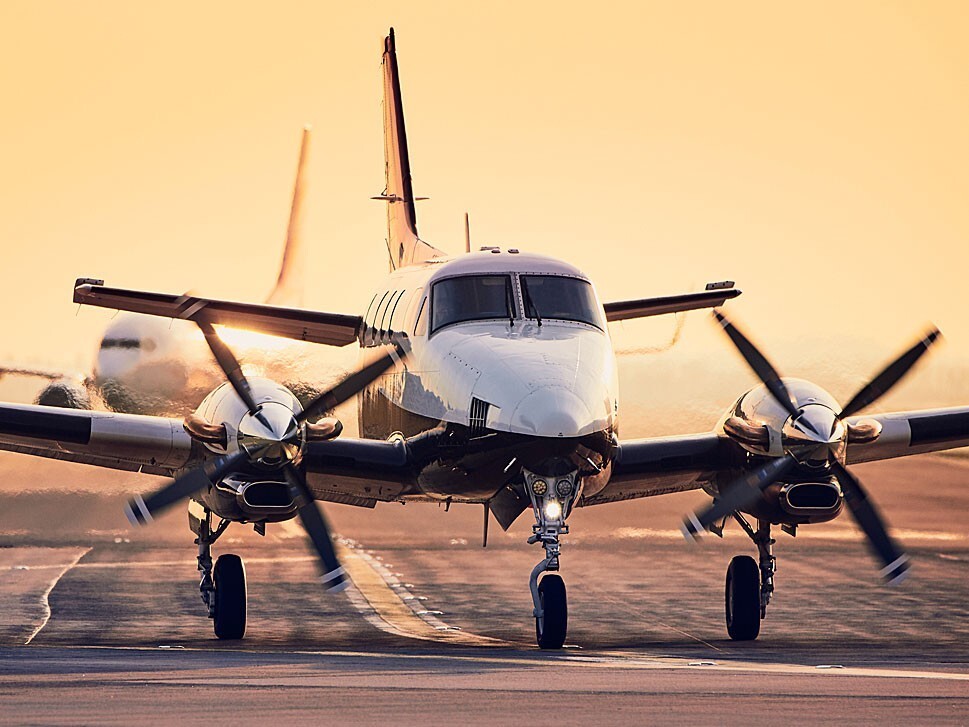- 15 Feb 2023
- Chris Kjelgaard
- Engines - BizAv
Would an Engine Exchange Make Sense on Your Aircraft?
When aircraft owners induct their turbine engines for scheduled heavy maintenance, Pratt & Whitney Canada (and some other Business Aviation companies) may offer engine exchanges instead. Chris Kjelgaard finds out when such exchanges make most sense.
Back to Articles
Engine exchange programs are becoming an increasingly common part of the overall engine maintenance picture as business aircraft owners realize such programs can offer them real operational and financial benefits compared with the costs and downtime involved in scheduling engines for full overhauls or required midlife inspections.
The clear leader in the engine exchange market is Pratt & Whitney Canada (P&WC), which began offering engine exchanges three decades ago for PT6A-27 turboprop engines powering de Havilland Canada Twin Otters.
Geoffrey Corbeil, Executive Director for Commercial Services for P&WC’s Aftermarket Services, says operators of the rugged de Havilland Canada DHC-6 Twin Otter family of STOL transport aircraft began clamoring for P&WC to provide engine exchanges after DHC stopped producing new Twin Otters in the 1980s.
Corbeil explains that at the time DHC originally ended Twin Otter production, operators had become so reliant on the unique performance characteristics and the tremendous reliability and durability of the Twin Otter family that they could not replace their Twin Otters in service with any other types.
As a result, operators found themselves having to induct their Twin Otters’ PT6A-20 and PT6A-27 engines for fourth and even fifth overhauls – with each successive overhaul becoming increasingly expensive as more and more replacement of LLPs, and repairs or replacement of other parts, was required.
Operators began finding it made commercial sense to hand over their Twin Otters’ run-out engines to P&WC and, in return for a cash adjustment, swap those engines for brand-new or zero-time PT6 powerplants.
P&WC took the operators’ run-out engines and overhauled them to zero-time condition, making the overhauled powerplants either available for exchange in future engine swaps, or adding them to P&WC’s pool of engines available for short-term rental.
After its initial move to exchange Twin Otter engines, P&WC expanded its engine-exchange offerings – which it provides as flat-rate exchanges for brand-new or zero-time-since overhaul engines under the ‘Smart Exchange’ brand – to cover a multitude of PT6 turboprop and turboshaft versions.
The company also offers Smart Exchange programs for its PW200 turboshaft family and its PW535, PW545 and JT15D turbofan engine lines for Light and Mid-Size business jets. P&WC’s Smart Exchange programs are specifically provided for engines which power aircraft with market values of less than $10m, according to Corbeil.
In addition to exchanges for the Twin Otter family, P&WC now offers Smart Exchange programs for the Cessna 208 Caravan family; all Beechcraft King Air models; Cessna Citation Mustangs; other Cessna Citation models; and helicopter types that include the Bell 212, Bell 412, Airbus H135 and Leonardo AW139.
Corbeil says that in addition to King Air variants, which he calls “big movers” in the engine-exchange market because a sizable proportion of all the engine exchanges P&WC transacts are destined for those Beechcraft turboprops, the OEM also provides a lot of exchange engines for the H135 and AW139.
Until about five years ago, aircraft value appraisers marked down the values of aircraft with exchanged engines rather than the engines with which they were originally fitted, but since then the views of appraisers have “matured”, and they don’t allocate any reduction in value to aircraft fitted with exchanged engines.
The Engine Exchange Decision
Owners and operators decide to exchange rather than overhaul the engines of their aircraft for any of three major reasons, according to Mike Saathoff, Director of Sales Operations and Engine and Accessory Sales for Elliott Aviation.
To discover what these three reasons are, click on the button below and continue reading this article in the AvBuyer MRO Special Industry Guide…
Related Articles
- 12 Jul 2022
- Chris Kjelgaard
- Engines - BizAv
- 20 Jun 2022
- Chris Kjelgaard
- Engines - BizAv


